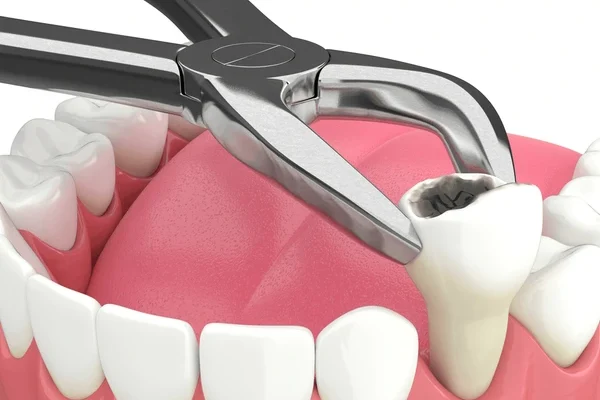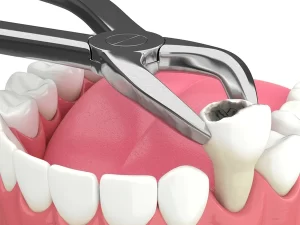
Tooth extraction is often a necessary procedure to maintain overall oral health. Whether due to severe decay, infection, or injury, losing a tooth can feel like a significant change, both functionally and aesthetically. But what should you do after the extraction? In this guide, we’ll explore several tooth replacement options to restore your smile, improve oral function, and maintain the health of your remaining teeth.
Why Replace a Missing Tooth?
Before we dive into your options, let’s discuss why replacing a missing tooth is so important. When a tooth is extracted, it leaves a gap that can cause several long-term problems. First, the surrounding teeth may shift towards the empty space, leading to misalignment and bite problems. Second, the bone in the area of the missing tooth can begin to resorb, or shrink, weakening the jaw and potentially altering your facial structure. Finally, missing teeth can make chewing more difficult and may even affect your speech.
That’s why it’s crucial to consider your replacement options shortly after the extraction to prevent these complications and maintain your smile’s function and appearance.

Dental Implant: The Gold Standard
One of the most popular and effective tooth replacement options is the dental implant. A dental implant is a titanium post that is surgically placed into the jawbone, where it serves as an artificial tooth root. Once it integrates with the bone (a process called osseointegration), a crown is placed on top, creating a natural-looking and fully functional replacement tooth.
Why Choose a Dental Implant?
- Longevity: Implants can last a lifetime with proper care, making them a long-term solution for tooth replacement.
- Bone Preservation: Because implants integrate with the jawbone, they prevent bone loss, maintaining the structure of your face.
- Natural Look and Feel: Implants closely resemble natural teeth in both appearance and function, allowing you to chew, speak, and smile confidently.
Who is a Good Candidate for Dental Implants?
Dental implants are suitable for most people, but you need sufficient bone density in the jaw to support the implant. In some cases, bone grafting may be necessary to strengthen the jaw before placing the implant. Your dentist will evaluate your bone structure and oral health to determine if this is the best option for you.
Dental Bridge: A Reliable Alternative
Another common option is a dental bridge, which literally “bridges” the gap left by a missing tooth. A bridge consists of two or more crowns on either side of the gap (called abutments) and a false tooth (called a pontic) in between. The abutment teeth are prepared to support the bridge, and the entire prosthesis is cemented in place.
Benefits of a Dental Bridge:
- Quicker Procedure: Unlike implants, which require months of healing, a bridge can typically be completed in just a few visits.
- Non-Surgical Option: If you prefer to avoid surgery, a bridge may be a more appealing solution.
- Aesthetic and Functional: Like implants, bridges restore the appearance and function of your smile, allowing you to chew and speak normally.
Considerations:
One downside to a bridge is that it requires the preparation of the adjacent teeth, which involves reshaping them to support the crowns. This means that healthy teeth will need to be altered, which some patients may prefer to avoid.
Removable Dentures: A More Affordable Option
For patients seeking a more budget-friendly solution, removable dentures may be the answer. Dentures can replace one or more missing teeth and are designed to be taken out for cleaning and sleeping.
Types of Dentures:
- Partial Dentures: These are used when only a few teeth are missing. Partial dentures are designed to fit around your existing teeth and are secured with clasps.
- Full Dentures: If you’re missing all of your teeth on the upper or lower jaw, full dentures can restore your smile and allow you to chew food again.
Advantages of Dentures:
- Cost-Effective: Dentures are typically less expensive than implants or bridges.
- Non-Invasive: Since no surgery is required, dentures are a non-invasive solution for missing teeth.
Downsides:
Dentures, while affordable, may not offer the same level of comfort or stability as implants or bridges. They can sometimes slip or shift in the mouth, making eating or speaking challenging. Additionally, they don’t prevent bone loss in the jaw.
Which Option is Right for You?
Choosing the right tooth replacement option depends on several factors, including your budget, oral health, and personal preferences. Dental implants are ideal for those looking for a permanent solution that mimics the look and function of natural teeth. Dental bridges offer a quicker, non-surgical alternative, while removable dentures provide an affordable solution for multiple missing teeth.
It’s essential to consult with your dentist to determine the best course of action for your unique situation. By addressing your missing tooth promptly, you can maintain your oral health and restore your smile with confidence.
Conclusion
Losing a tooth doesn’t mean losing your smile. Whether you opt for a dental implant, bridge, or denture, there are plenty of options available to replace a missing tooth after extraction. At Dr. GO Smile, we specialize in personalized tooth replacement solutions tailored to meet your needs. Contact us today to schedule a consultation and explore the best option for you.
